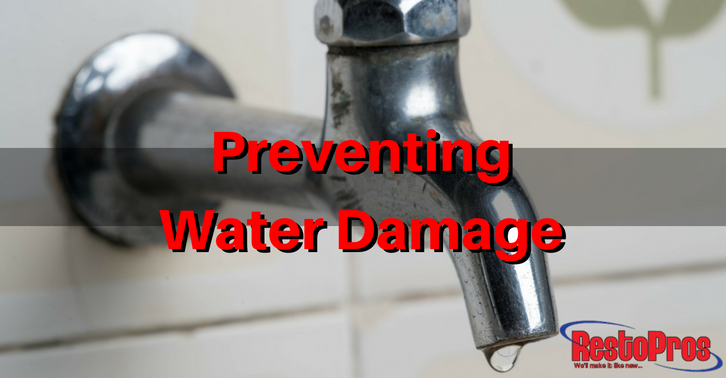 We’ve address how to go about waterproofing your home to prevent external water from damaging systems inside your home. But external sources are not the only avenue of destruction that water has for devastating that sanctuary. Your house is filled with pipes and equipment that condenses water, any of which can lead to a disastrous release of water. Leaks and condensation can buildup and, with limited ventilation inside walls or your attic, that water will evaporate slower, leading to sodden insulation, mold, and structural damage. So take steps now and learn how to best protect your home from internal water sources.
We’ve address how to go about waterproofing your home to prevent external water from damaging systems inside your home. But external sources are not the only avenue of destruction that water has for devastating that sanctuary. Your house is filled with pipes and equipment that condenses water, any of which can lead to a disastrous release of water. Leaks and condensation can buildup and, with limited ventilation inside walls or your attic, that water will evaporate slower, leading to sodden insulation, mold, and structural damage. So take steps now and learn how to best protect your home from internal water sources.
Know Where Your Shutoffs Are
Make sure you know how to access all the water shutoff valves in your home. The most important of these is, of course, the main water shutoff valve. For any major leak or burst pipe, the first thing you should do is shut off water to the problem area, so know where your shutoff valve is located.
You should also remember to turn this valve off when you go on vacation. First, this helps reduce water consumption if there are any drips or leaks. Second, it will prevent an uncontrolled flood of water if something does go wrong while you’re out.
Maintain Appliances
So many appliances in our homes use water. The ice machine in your fridge, your instant coffee maker, the washing machine, and the dishwasher are all appliances with direct connections to a water source. Ignoring basic maintenance for these devices and their connections is a recipe for disaster. Water storage units like your water heater should be drained and the sediment removed regularly, while water hose connections (such as the one on your washing machine) should be inspected for signs of aging, wear, or seal damage.
Avoid Clogs
Clogged drains can lead to backsplash, overfilled sinks, or burst pipes elsewhere in your plumbing. Taking care of your plumbing is important and should never be ignored. That means keeping pipes insulated during the winter and leaving faucets dripping whenever a freeze is scheduled to happen. But it also means running water down the garbage disposal to make sure it’s clear of food.
Avoid flushing any of the following down your drain, regardless of if that’s a disposal, toilet, or regular sink:
- Grease and Fats
- Starchy Food
- Non-Water-Soluble Items
- Strong Chemicals
- Flushable Wet-Wipes
- Anything other than hygienic paper
Avoid washing extremely dirty clothes in your washing machine. Rinse them off first to remove dirt. Doing so will prevent washing machine clogs and sediment buildup.
Repair Problems Immediately
Whether it’s a pipe that’s leaking or an HVAC unit that’s causing condensation to overflow the drip pan, get these problems sorted out quickly. Call a repairman or plumber to handle the difficult tasks of leak detection and repair. Remember, the sooner you take care of water source, the less likely it is to develop into something that will require you to call for water damage restoration services.
Don’t forget to follow RestoPros on Facebook, Twitter, LinkedIn, and Google+ for new Updates, News, and Discounts!
